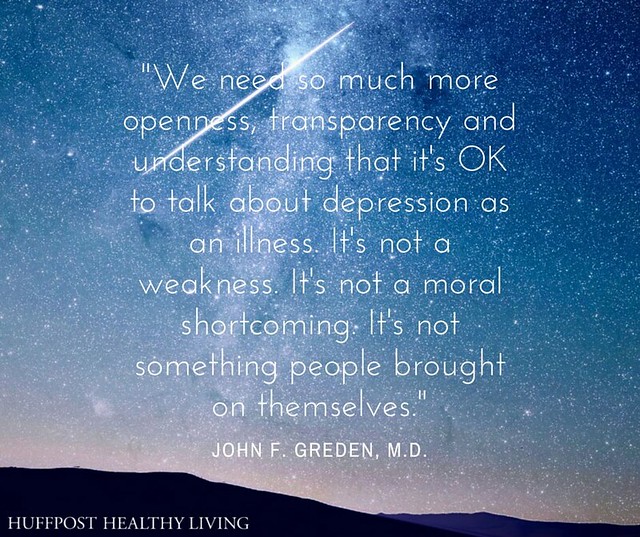Mental Illness in Society
I want you to imagine a group of the people closest to you: friends, family, partners. Remember what you have done with each one; imagine the memories you’ve made together. It’s a pleasant image, right? Statistically speaking, one in five people closest to you have experienced a mental illness in the past year. 1 in 25 of those people has a disorder that can severely limit that person in everyday activities. As a society, we don’t realize just how common mental illness is: it has been ostracized to the point of a vague nightmare that could never happen to us. The reality is that mental illness is a common affliction in our society. 20 percent of teenagers aged 13-18 have a severe psychological disorder. 13 percent of kids aged 8-15 have a mental disorder as well. For something this common, why is it such a taboo subject: something only conversed about behind the closed doors of therapy and diagnosis? There is no good reason, but we need to know more about the subject’s history if we are to change the stigma that surrounds it.Mental illness is defined as, according to Mayo Clinic, “disorders that affect your mood, thinking, and behavior.” Examples of mental illness include depression, anxiety disorders, schizophrenia, eating disorders, and addictive behaviors.” This encompasses all diagnosis that affects your health but is not a physical ailment. There are also many laws that protect the rights of people with mental disabilities, such as 504 laws for students. Section 504 of the Rehabilitation Act of 1973, more commonly referred to 504 laws, prohibits discrimination based upon disabilities. This covers both mental and physical disabilities. Despite the 504 laws, students with emotional or behavioral disorders have the worst graduation rate of all students: only 40 percent of these students graduate from high school. We need to make mental illness a more acceptable topic to talk about because this is the first step in making the situation better for those who suffer from it.
The second obstacle for people who suffer from mental disorders is the stereotypes that come with a diagnosis. Stereotypes like people with mental illness are dangerous or unpredictable, they’re incompetent, they deserve the blame for their conditions, and that they have little help for recovery. All of these are false for the majority of patients with a mental disability. Many people with mental illness are functioning members of society who have a bit tougher time with some things. An imbalance of chemicals in the brain causes mental illness; this predominately causes ADD, ADHD, and depression. The other leading cause is a traumatic experience, which can lead to multiple personality disorder or PTSD. Neither of these reasons could have been prevented by the person suffering, and it’s not their fault. These people need to feel able to talk about what’s happening, so they can get the help they need. Mental illness isn’t like a physical illness. People can’t see the symptoms of a mental illness, which makes it even harder to recognize.
There are often decades between the first appearance of symptoms and treatment of the illness. This lack of treatment leads to serious consequences, maybe even the most severe consequence. Suicide is not something that is easy to talk about, which is why we need to talk about it more. It is the 10th leading cause of death in the United States. If you want to get more specific, it is the third leading cause of death for people ages 10-14 and the 2nd leading cause of death for people aged 15-24. 90 percent of children who commit suicide have a mental health condition. Each day, 18-22 veterans die by suicide, mainly because of post-traumatic stress disorder. Treatment can help people before they decide death is the only option.
In September of 2017, a 14-year-old boy named Tyler Kleinrichert, who was my friends, was suffering from depression. Without any signs or any warning, he shot and killed himself. It destroyed his family: his mother, father, and older brother stopped functioning. No one can understand what that is like unless they have experienced it for themselves. Two other people, I hold closest, a 16-year-old boy and a 55-year-old man, have both attempted suicide. Thankfully, neither succeeded and both have received treatment. But for Tyler, it’s too late. He is gone and never coming back. Stories like this are why mental illness is so scary to talk about, but stories like this will keep popping up if nothing changes. If you know someone diagnosed with a mental illness, be there for them. Let them know that you will support them and be there when they need you. With any luck, they will stay with you as well.



